Image
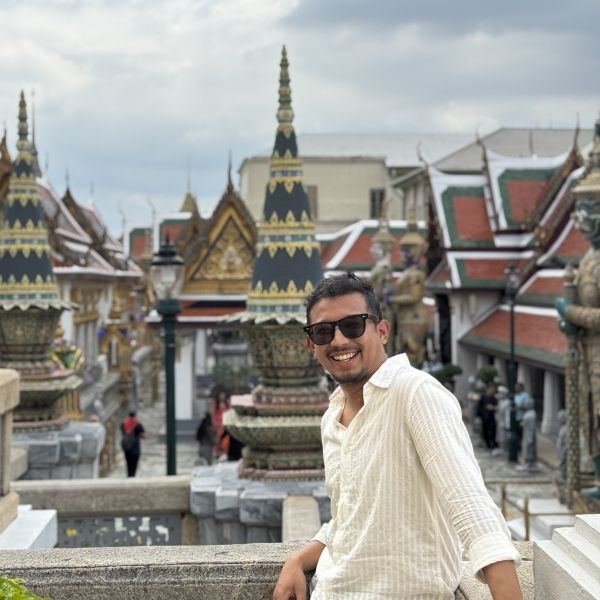
-
Nischal Shrestha (he/him)
Program Officer, Biodiversity Conservancy Nepal
- 30 Under 30
- 2025
Nischal empowers local communities through citizen science and technology to promote human-wildlife coexistence and advance evidence-based conservation of endangered species in Nepal.
Nepal, Age 29
How are you using education to build more sustainable and equitable communities? Tell us about your EE work and impact.
Through my work, I use education as a catalyst to bridge science and society for more sustainable and equitable conservation outcomes. I engage local communities, often those living closest to wildlife habitats, by training them as citizen scientists to monitor species like pangolins, gharials, and fishing cats. These participatory approaches empower local people with scientific knowledge and tools such as camera traps and data loggers, transforming them from passive observers into active stewards of biodiversity.
In addition, I mentor and train university students in research design, field data collection, and species monitoring techniques to help cultivate the next generation of wildlife experts and conservation leaders. I also conduct awareness programs and community dialogues that promote coexistence, emphasizing how conservation aligns with local livelihoods and cultural values.
By integrating community empowerment, youth engagement, and science-based education, my work fosters ownership, inclusivity, and long-term stewardship of natural resources—building a conservation model where informed citizens and skilled young professionals work together for a sustainable future.
Tell us about your journey to where you are today. What inspired you? What has your path been like?
Ever since I was a child, I have been deeply fascinated by wildlife and the natural world. Growing up surrounded by Nepal’s rich biodiversity, I was always curious about how animals survive, adapt, and interact with people. This curiosity evolved into a purpose as I learned more about the growing threats to wildlife and the urgent need for coexistence between humans and nature.
My academic journey in Environmental Science strengthened this passion, giving me the scientific foundation to pursue wildlife research and conservation. However, my greatest inspiration came from my mentors—Dr. Sandeep Shrestha and Mr. Ashish Bashyal—whose guidance shaped my path as a conservationist. Their mentorship not only deepened my technical skills in research and fieldwork but also instilled in me the values of persistence, collaboration, and community-centered conservation.
From assisting in field surveys to leading projects on endangered species like gharials, pangolins, my journey has been one of learning, growth, and purpose. Each step has reinforced my belief that conservation succeeds only when science, technology, and local people come together to protect the wildlife that defines our shared planet.
How can people learn more about or support your work?
People can learn more about my work through Biodiversity Conservancy Nepal (BioCoN), where I currently serve as Program Officer. BioCoN regularly shares updates on ongoing research, conservation actions, and community engagement programs focusing on endangered species like pangolins, gharials, and fishing cats. You can follow Biodiversity Conservancy Nepal on social media platforms such as Facebook and Instagram to stay updated on our initiatives and impact stories.
Support can come in many ways by collaborating on research, providing financial or technical assistance, or amplifying awareness of our community-based conservation work. We also welcome volunteers, students, and conservation enthusiasts to participate in citizen science and outreach activities that strengthen local stewardship of wildlife.
You can also learn more about my journey and professional updates through my LinkedIn profile or contact me directly to explore partnership or engagement opportunities.
Together, through science, education, and community collaboration, we can create lasting conservation impacts that promote coexistence between people and wildlife.
A Little More About Me
If you could be any animal or plant, what would you be and why?
I would be a pangolin, because after spending years studying and protecting them, I feel deeply connected to their quiet resilience and vital ecological role.What are you happiest doing?
I’m happiest when traveling to the mountains. It reconnects me with nature, inspires reflection, and recharges my soul for the work I do.What is your superpower? Which of your qualities best fuels the work you do?
My superpower would be empathy—being able to understand both people and wildlife helps me bridge science with community voices to drive meaningful, inclusive conservation.What song or artist has uplifted you lately?
"Parkhidaina" by Chumbak, a Nepali rock band, has been uplifting me lately with its inspiring lyrics and soulful energy.
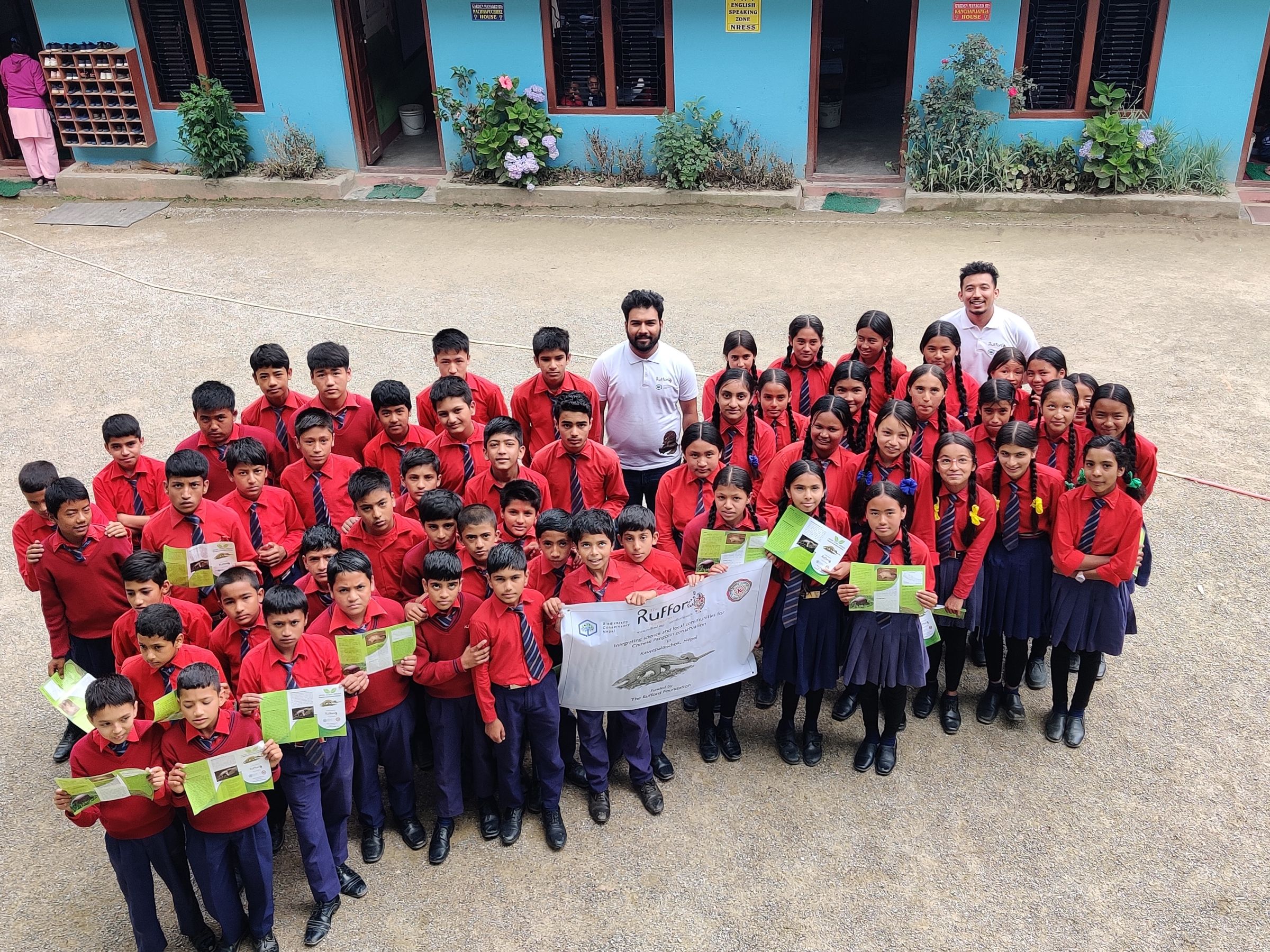
Students of the community school with brochures after an awareness campaign. Photo credit: Biodiversity Conservancy Nepal
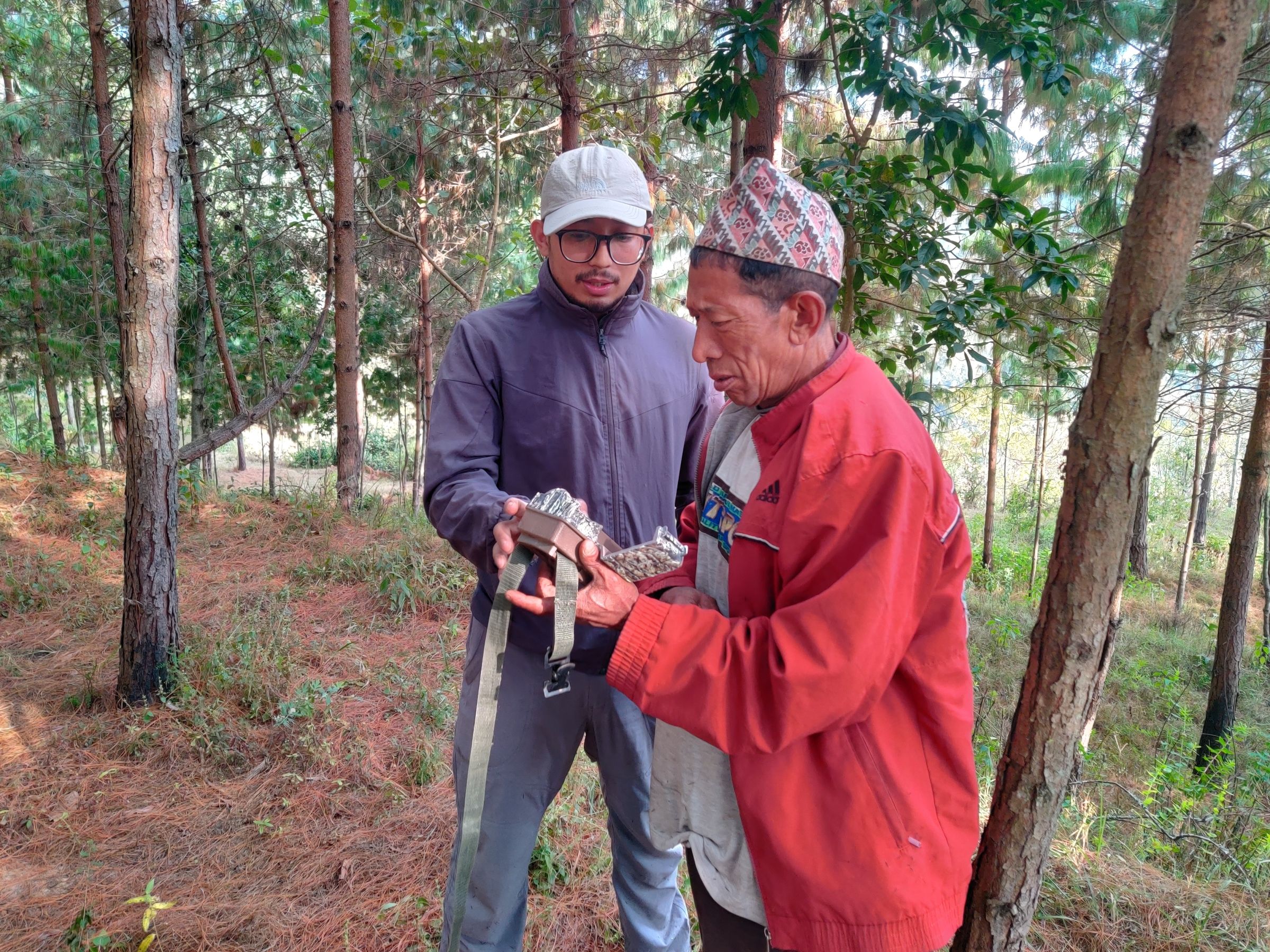
Nischal Shrestha training local community forest user community members on using camera traps in the field. Photo credit: Ishan Subedi, Biodiversity Conservancy Nepal
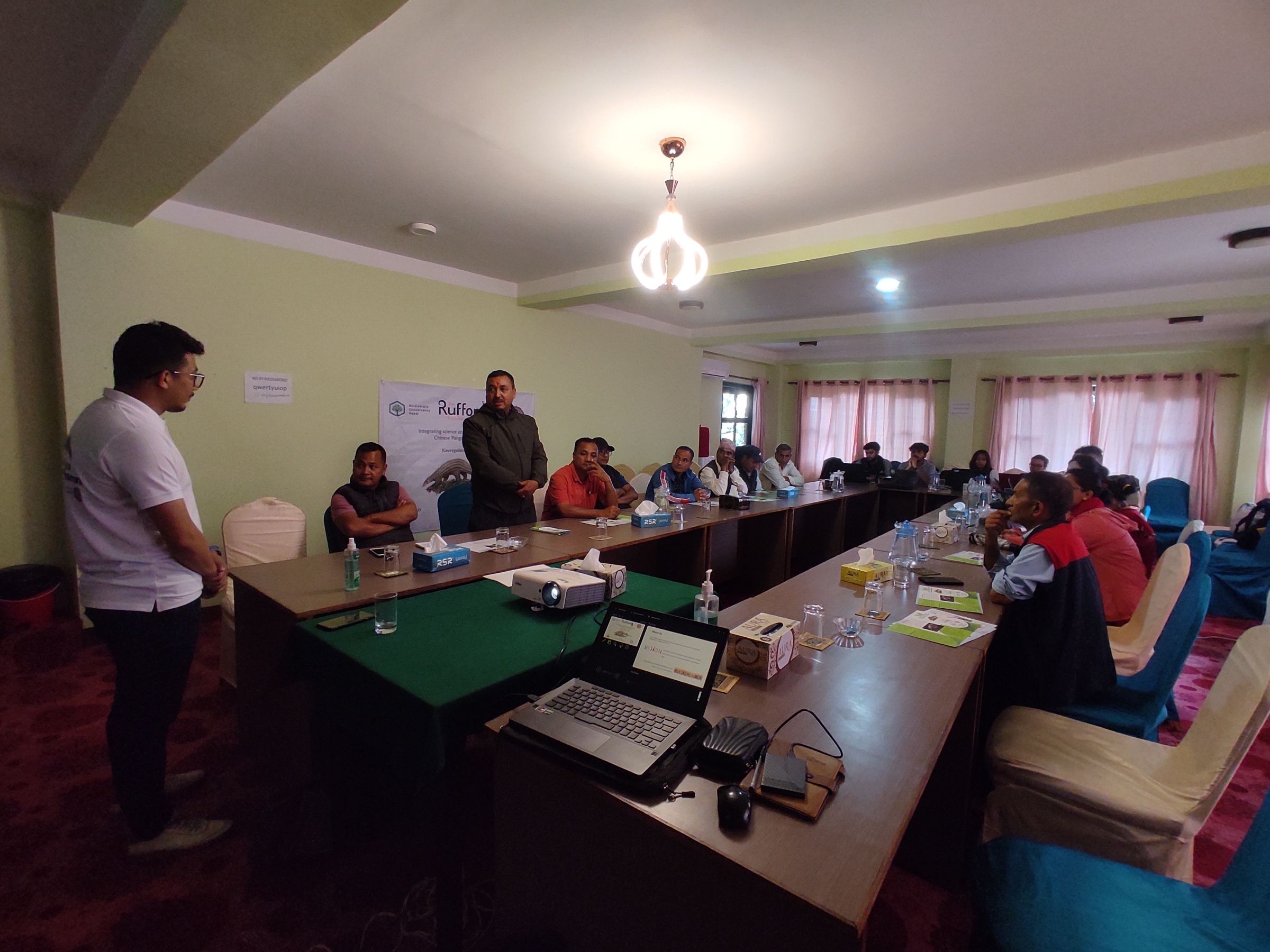
Nischal Shrestha interacting with local community forest user group members during a stakeholders meeting. Photo credit: Sadip Pandey, Biodiversity Conservancy Nepal
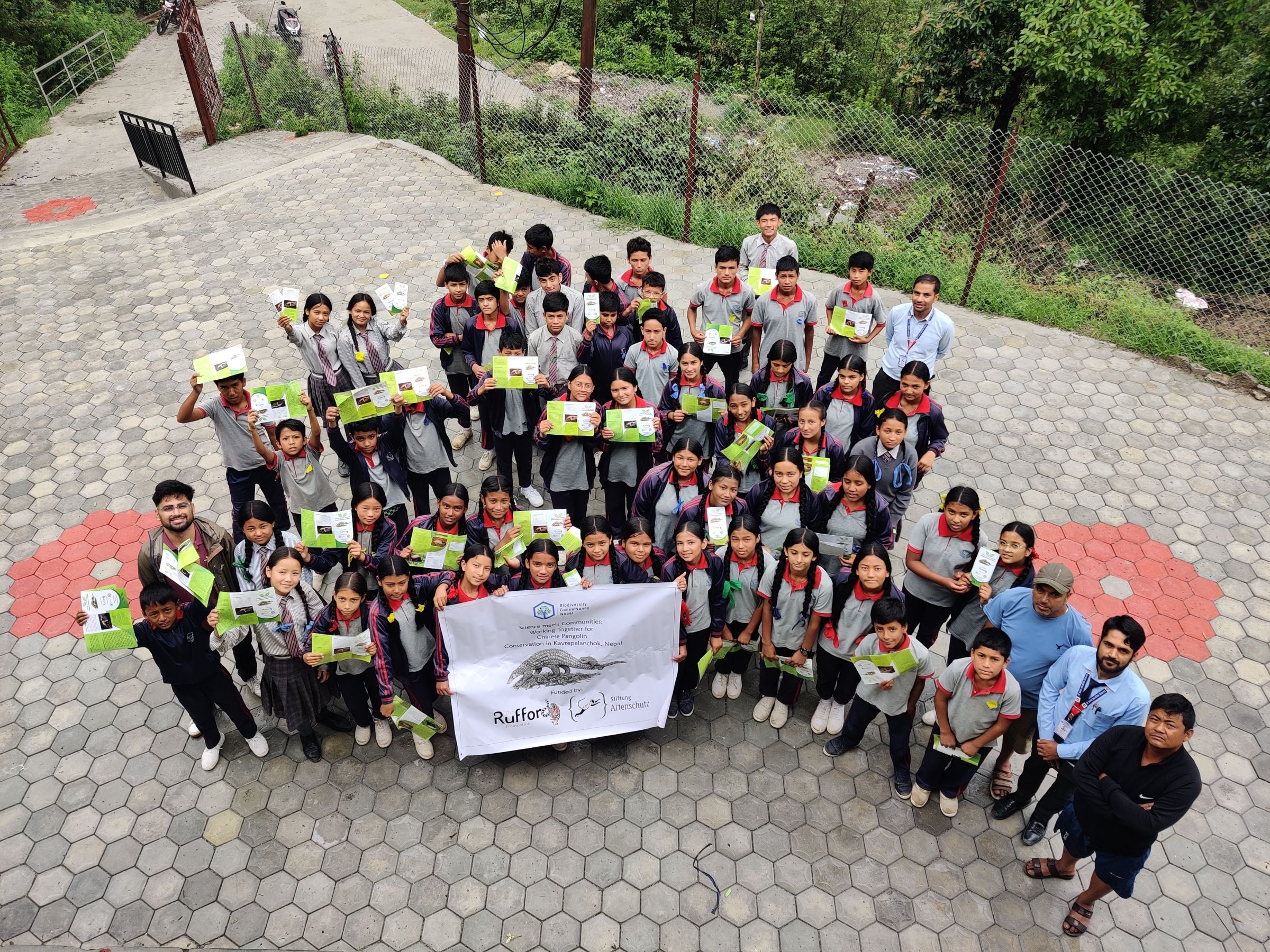
Nischal Shrestha teaching the students and teachers of a school about the importance of conserving pangolins in the community. Photo credit: Ishan Subedi, Biodiversity Conservancy Nepal
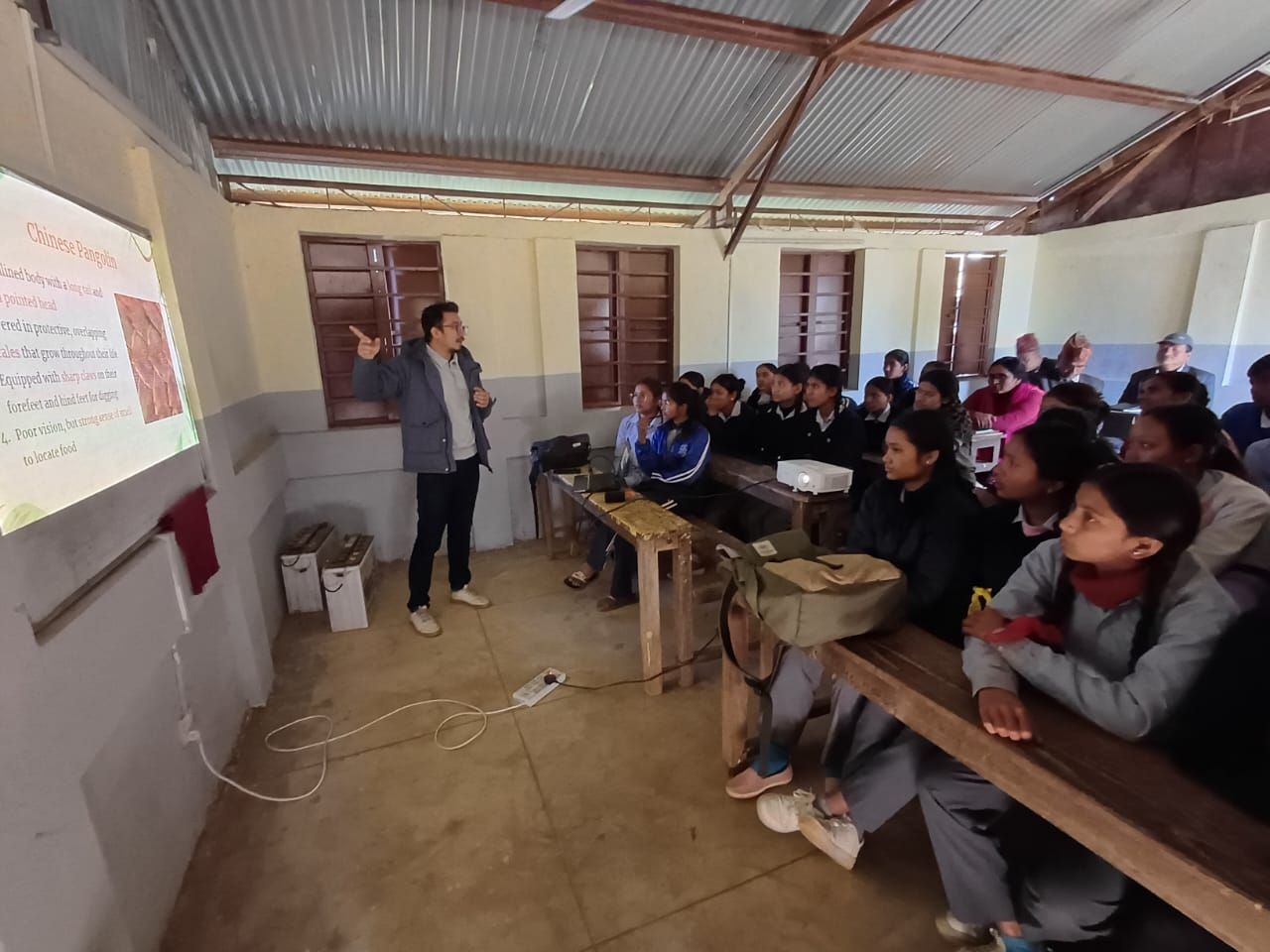
Students of the community school after celebrating World Pangolin Day. Photo credit: Sujan Prakash Pradhan, Biodiversity Conservancy Nepal